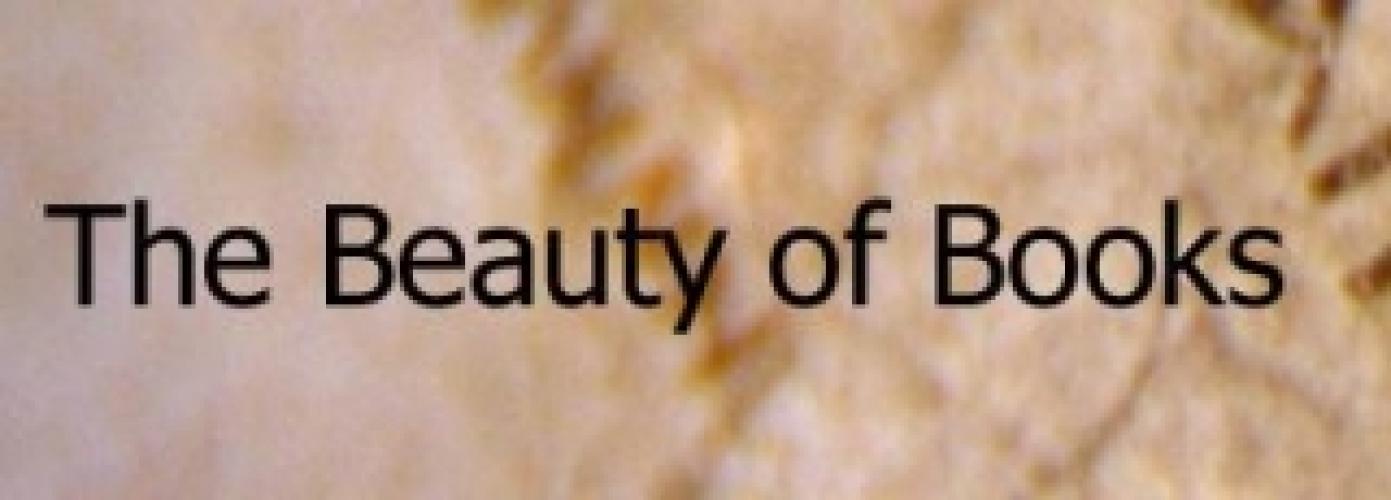The Beauty of Books
Literature

Station:
BBC Four (GB)
Status:
Ended
Start:
2011-02-07
Rating:
0/10 from 0 users
Series combining human stories, expert interviews, book illustrations and historic archive to reveal the beauty of books.
The Beauty of Books Next Episode Air Date
TV Show Ended.
The Beauty of Books Images
List of episodes
S1E2 - Medieval Masterpieces
The medieval era was the heyday of illuminated manuscripts. In the 14th and 15th centuries, there was a flowering of religious texts set into beautifully decorated pages. Among these devotional books were psalters, or books of psalms. Hundreds of these were produced, but the Luttrell Psalter is remarkable for its whimsical, humorous and vivid pictures of rural life and a demonic world that is terrifying and grotesque.
This period also saw the development of literature in English. The great Geoffrey Chaucer, often called the father of English literature, took the bold decision to reject literary convention and write in English. His brilliant, bawdy satire the Canterbury Tales became a medieval bestseller and, as a result, when William Caxton set up his first printing press in London, he chose Chaucer's tales as his first major English publication.
These wonderful books contain clever, often mysterious references for their readers and are crucial milestones in the story of the book, charting the last phase of the manuscript and the arrival of the printed book.
Air Date: 14 Feb 2011 14:30 (CDT)
S1E3 - Illustrated Wonderlands
The Victorians were masters of illustrated books, especially for children. Thanks to an emerging middle class readership, new printing technology and a sentimentalised regard for childhood, fairy tales and fantasy fiction containing words and pictures grew into an established genre.
First published in 1865, Alice in Wonderland by Lewis Carroll was one of the most remarkable books of the period, a combination of the genius of Carroll's nonsense verse and prose and the meticulously detailed illustrations of John Tenniel. Creating a handshake on the page, they formed an inseparable bond that has since become a cultural phenomenon. But beyond Tenniel, Carroll's masterpiece has been illustrated hundreds of times by artists like Salvador Dali, Ralph Steadman and Mervyn Peake, all creating their own distinctive Wonderlands. Peake was also a talented writer, and his Gormenghast trilogy of 1946 is an illustrated series of fantasy novels that re-interpreted the genre in the 20th century.
Today, illustrated or 'picture' books are still thriving for the youngest readership. The Gruffalo by Julia Donaldson and Axel Scheffler reveals how the genius of the writer and illustrator partnership continues to enthral and enrich the story of the book.
Air Date: 21 Feb 2011 14:30 (CDT)
S1E4 - Paperback Writer
The paperback book democratized reading in the 20th century, and printing directly onto the covers became a way of selling a book in the mass market.
Nineteen Eighty-Four by George Orwell was a book written in and for this era, emerging as a paperback in 1954. Its changing cover design reflects each decades approach to selling the book to new readers: from its classic 50s Penguin cover to the latest design from Jon Gray, they are signs of our times.
As an example of how cover design has become art, the iconic 'cog eye' design by David Pelham of Anthony Burgess's A Clockwork Orange has permeated society since the first paperback of 1972.
Bringing the story of the book up to the 21st century, the arrival of electronic readers has sent traditional publishing into a tailspin. The paperback and its cover design has been replaced by the concept of mass storage and electronic pages. As this new technology gains new fans the paper book comes under renewed scrutiny. Whether society accommodates both ways of disseminating knowledge in the future depends on our continued devotion to good writing, editing and design.
Air Date: 28 Feb 2011 14:30 (CDT)
